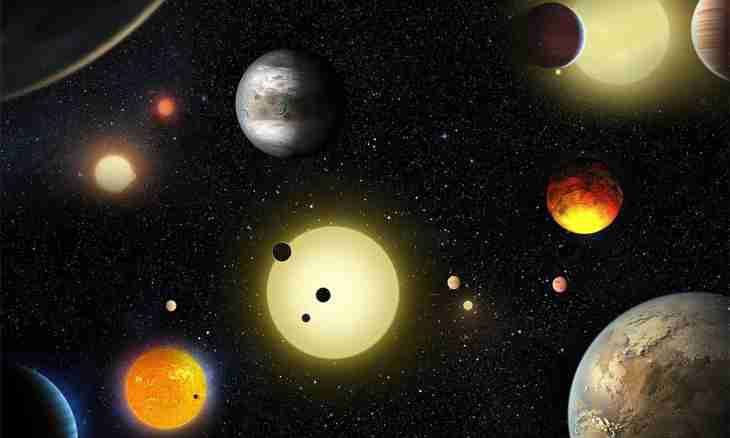In the sky five planets – Mercury, Venus, Mars, Jupiter and Saturn with the naked eye are visible. Sometimes they vanish and that to observe them, it is necessary to use field-glasses or even telescopes. Nevertheless, the periods when they are visible, rather frequent and long. It is necessary to know only in what part of the sky they are, and their distinctive signs.
It is required to you
- It is possible to use the field-glass or the telescope.
Instruction
1. Five planets were discovered in ancient times when there were no telescopes. The nature of their movements on a firmament is other than movement of stars. On the basis of it people separated planets from millions of stars. Distinguish internal and external planets. Mercury and Venus are closer to the Sun, than Earth. Their arrangement in a heavenly firmament is always close to the horizon. Respectively these two planets are called internal planets. Also Mercury and Venus kind of follow the sun. Nevertheless they are visible with the naked eye at the moments of the maximum elongation, i.e. during the maximum angular distance from the Sun. These planets can be noticed in twilight, soon after sunset or in pre-dawn hours. Venus is much larger than Mercury, much more brightly, and it is easier to notice it. When Venus appears in the sky, on brightness any star will not be compared to it. Venus shines with white light. If attentively to look narrowly at it, for example, by means of the field-glass or the telescope, then it is possible to notice that it has different phases, like the Moon. Venus can be observed in the form of a sickle, decreasing or increasing. At the beginning of 2011 Venus was visible about three hours before dawn. Again it will be possible to observe a naked eye it since the end of October. It will be visible in the evening, in the southwest in the Libra. Towards the end of a year its brightness and duration of the period of visibility will increase. Mercury is generally visible during twilight, it is rather difficult to find it. Ancient called him for it god of twilight. In 2011 it can be seen since the end of August approximately within a month. The planet at first will be visible in the constellation of Cancer in the morning, and then will pass into the Leo constellation.
2. Mars, Jupiter and Saturn treat external planets, respectively. It is the best of all to observe them at the opposition moments i.e. when Earth appears on one straight line between the planet and the Sun. They can remain in the sky all night long. During the maximum brightness of Mars (-2.91m) this planet concedes only to Venus (-4m) and to Jupiter (−2.94 m). In the evening and in the morning Mars is visible as red-orange "star", and in the middle of the night changes light for yellow. In 2011 Mars will appear in the sky in the summer and again will disappear at the end of November. In August the planet can be seen in the constellation of Twins, and by September it will pass into the constellation of Cancer. Floodlight is often visible in the sky as one of the brightest stars. Despite this, it is interesting to observe it by means of the field-glass or the telescope. In this case become visible the disk surrounding the planet, and four largest satellites. The planet will appear in June, 2011 in east part of the sky. Floodlight will approach the Sun, gradually losing brightness. Closer to fall it brightness will begin to increase again. At the end of October Jupiter will be opposed. Respectively, autumn months and December - the best time for observations of the planet. From the middle of April and prior to the beginning of June Saturn is the only planet which can be observed with the naked eye. November will become the next favorable period for observations of Saturn. This planet slowly moves on a firmament and there will be the whole year in Virgo constellation.

